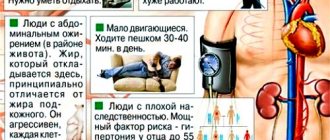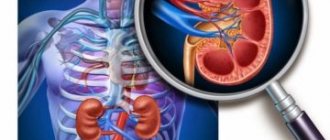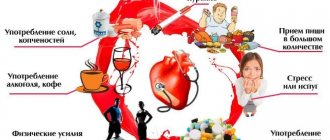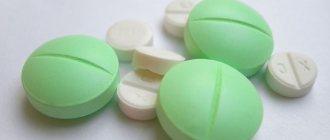Blood pressure pills and alcohol do not interact well.
Alcohol helps convert drug components into toxins that negatively affect the body.
Doctors advise giving up alcohol if patients have problems with blood pressure, so as not to aggravate their condition.
Letters from our readers
Topic: Grandma's blood pressure has returned to normal!
From: Christina ( [email protected] )
To: Administration otgipertonii.ru
Christina, Moscow
My grandmother’s hypertension is hereditary - most likely, I will have the same problems as I get older.
I accidentally found an article on the Internet that literally saved my grandmother. She was tormented by headaches and had a repeated crisis. I bought the course and monitored the correct treatment.
After 6 weeks she even started talking differently. She said that her head no longer hurts, but she still takes pills for blood pressure. I am sending a link to the article
Compatibility of Perindopril and alcohol
Perindopril is a medicine prescribed to patients with serious heart and vascular diseases. To alleviate their condition, patients should lead a measured lifestyle, excluding overload and bad habits. Drinking alcoholic beverages can not only render the treatment pointless, but also provoke a vascular accident.
The annotation for the medication states: it is recommended to exclude alcohol during the course of treatment. Combining medications with alcohol-containing drinks can have serious consequences.
Taking alcohol together with medication can cause:
- exacerbation of ischemia:
- hypertensive crisis;
- a sharp drop in blood pressure;
- cardiac conduction disorders, arrhythmias;
- deterioration of the function of the excretory system.
The likelihood of complications depends on the condition and age of the sick person, the amount and strength of the alcohol-containing drink.
Take the Attention Test! Find 10 differences! (click right here!)
Release form and composition
Dosage forms of Perindopril:
- tablets: white or white with a creamy/yellowish tint, slight marbling is acceptable, flat-cylindrical, chamfered (10, 15, 20, 30, 50 or 100 pcs. in glass or polymer jars or bottles, 1 jar/bottle in a cardboard pack; 10 pcs in blister packs, 1–5 packs in a cardboard pack, 7 pcs in blister packs, 2–4 packs in a cardboard pack);
- film-coated tablets: round, biconvex, the core on the cross section is almost white or white; 2 mg - almost white or white; 4 mg each – from green to light green; 8 mg each - from green with a grayish tint to gray-green (10 pieces in blister packs, 1-3, 5, 6 or 9 packs in a cardboard pack).
Composition of 1 tablet:
- active ingredient: perindopril erbumine – 2, 4 or 8 mg (perindopril – 1.669; 3.338 or 6.675 mg);
- additional components (2/4/8 mg): magnesium stearate – 1/1/1.5 mg; partially pregelatinized corn starch – 43.1/42.2/62.3 mg; talc – 2/2/3 mg; microcrystalline cellulose – 13/12.7/18.8 mg; croscarmellose sodium – 5/5/7.5 mg; lactose monohydrate (milk sugar) – 33.9/33.1/48.9 mg.
Composition of 1 film-coated tablet:
- active ingredient: perindopril erbumine – 2, 4 or 8 mg;
- additional components (2/4/8 mg): pregelatinized corn starch – 15/15/15 mg; microcrystalline cellulose – 71/69/65 mg; crospovidone – 10/10/10 mg; colloidal silicon dioxide – 1/1/1 mg; Magnesium stearate – 1/1/1 mg;
- shell (2/4/8 mg): Opadry II white 85F18422 (talc – 14.8%, macrogol-3350 – 20.2%, polyvinyl alcohol – 40%, titanium dioxide – 25%)/Opadry II green 85F21738 (dioxide titanium – 24.345%, talc – 14.8%, indigo carmine – 0.54%, polyvinyl alcohol – 40%, macrogol-3350 – 20.2%, yellow aluminum varnish – 0.115%)/Opadry II green 85F21867 (titanium dioxide – 21%, polyvinyl alcohol – 40%, talc – 14.8%, macrogol-3350 – 20.2%, indigo carmine – 2.5%, yellow iron oxide dye – 1.5%) – 3/3/3 mg.
Brief characteristics of the drug
This is an antihypertensive drug from the group of ACE inhibitors. Reduces the rate of synthesis of organic substances leading to vascular spasms.
Action of the drug:
- normalizes blood pressure;
- increases the elasticity of the vascular wall, reduces peripheral resistance;
- reduces the heart's need for oxygen, improves exercise tolerance;
- prevents sodium retention in the body.
Used for diseases:
- arterial hypertension;
- stable ischemic heart disease;
- chronic cardiovascular failure;
- prevention of transient ischemic attacks, repeated heart attacks, strokes.
Side effects when taken:
- headache, drowsiness, coordination problems;
- tachycardia, palpitations, arrhythmia;
- bronchospasm.
The drug is contraindicated in case of serious pathologies of the liver and kidneys, angioedema.
https://myweak.ru/alkogolizm/lekarstva/perindopril-sovmestimost.html
Pharmacological
Perindopril is an inhibitor of the enzyme that converts angiotensin I to angiotensin II (ACE). ACE (kinase) is an exopeptidase that converts angiotensin I into the vasoconstrictor angiotensin II, and also causes the breakdown of the vasodilator bradykinin to an inactive heptapeptide. Inhibition of ACE leads to a decrease in the concentration of angiotensin II in plasma, an increase in plasma renin activity and a decrease in aldosterone secretion. Because ACE inactivates bradykinin, ACE inhibition leads to increased activity of the circulating and local kallikrein-kinin system (resulting in activation of the prostaglandin system as well). This mechanism is believed to explain the antihypertensive effect of ACE inhibitors and is partly responsible for some of the side effects of drugs in this group (for example, dry cough). Perindopril acts through its active metabolite, perindoprilate. Other metabolites are inactive.
Arterial hypertension.
Perindopril reduces peripheral vascular resistance, which leads to a decrease in blood pressure. The result is increased peripheral blood flow without affecting heart rate. As a rule, renal blood flow increases, while the glomerular filtration rate usually does not change.
The maximum antihypertensive effect develops 4-6 hours after taking a single dose and persists for at least 24 hours (the effectiveness of perindopril after 24 hours is 87-100% of the maximum effect).
Blood pressure drops quickly. In patients who respond to treatment with perindopril, normalization of blood pressure is achieved within a month and is maintained without the occurrence of tachyphylaxis. After stopping perindopril, there is no withdrawal effect. Perindopril reduces left ventricular hypertrophy.
It is known that perindopril has a vasodilator effect, improves the elasticity of large arteries and reduces the ratio of the thickness of the medial wall of the vessel / diameter of the lumen of the vessel in small arteries.
Adjunctive therapy with thiazide diuretics has a synergistic effect. The combination of an ACE inhibitor and a diuretic also reduces the risk of hypokalemia caused by diuretic therapy.
Heart failure.
Perindopril reduces heart function by reducing pre- and post-exercise.
In patients with heart failure, perindopril is known to cause:
— Decrease in filling pressure of the left and right ventricles;
— Decrease in total peripheral vascular resistance;
— Increased cardiac output and improved cardiac index.
The use of an initial dose of 2 mg of perindopril in patients with mild to moderate heart failure does not cause a significant reduction in blood pressure.
Stable coronary heart disease.
It is known that long-term treatment with perindopril at a dose of 8 mg once daily (including in complex therapy with platelet aggregation inhibitors, lipid-lowering agents and beta-blockers) prevents cardiovascular complications in patients with documented stable coronary heart disease and reduces the risk of myocardial infarction and heart failure.
Use of the drug for alcoholism
Significant difficulties during treatment arise if the patient has an alcohol addiction. Patients with chronic alcoholism do not realize the severity of the consequences and may take a large dose of alcohol.
Such patients are prone to breakdowns and serious violations of a sober lifestyle. Often alcoholics cannot adequately assess their condition.
Relatives of a person are obliged to notify the attending physician about the existing problem. The specialist weighs the advisability of using the medication, taking into account the patient’s painful craving for alcohol.
Perindopril or Perineva - which is better, what is the difference
Manufacturer: KRKA, Russia
Release form: tablets
Active ingredient: perindopril
Perineva is a substitute for Perindopril tablets, an ACE inhibitor and is prescribed to patients suffering from high blood pressure. It is recommended to take the drug only under the supervision of a doctor, who adjusts the dosage of the drug depending on the diagnosis.
The purpose of Perinev's analogue is the same as Perindopril Plus. This is explained by the fact that the composition includes the same active ingredient.
Reviews about these drugs are equally positive, so they can replace each other in therapy for arterial hypertension.
Using the drug for a hangover
The effect of the product is designed for 24 hours. In case of renal pathologies, the period of drug elimination is prolonged. The combination of a hangover syndrome with a medicine located in the body tissues against the background of a serious illness can lead to unpredictable consequences.
A hangover is a potentially life-threatening condition:
- blood thickening caused by dehydration leads to the formation of blood clots;
- narrowing of blood vessels can cause arterial stenosis;
- severe intoxication creates additional stress on the heart;
- Nausea, vertigo, and headache are typical.
Taking the drug during a hangover can provoke a severe attack of angina, increase tachycardia and arrhythmia.
Main components
“Perindopril” is produced, reviews of which are mostly positive on the Internet, in tablets of 4, 8, 5 or 10 mg. This medicine is sold in pharmacies only with a doctor's prescription. The tablet contains the following substances:
- active salt (arginine, erbumine);
- MCC;
- lactose monohydrate;
- magnesium stearate;
- aerosil.
One package usually contains 10-30 tablets of Perindopril.
Consequences of drinking alcohol
The systematic combination of medication with strong drinks often causes a serious deterioration in the patient’s condition:
- The drug causes lethargy, drowsiness, and disorientation. During intoxication, the likelihood of falling and getting injured increases.
- An increase in heart rate is accompanied by a decrease in the density of cardiac muscle fibers. There is a malfunction of the sinus node.
- The medicine is often prescribed to patients during rehabilitation after a heart attack or stroke. Drinking strong drinks during this difficult period can cause a second attack.
- When ethanol enters the bloodstream, the blood vessels dilate, and when interacting with the drug, this leads to a drop in blood pressure. After some time, a sharp narrowing of the capillaries occurs - the pressure rises critically. Jumps in blood supply can lead to rupture of the walls of blood vessels.
- Taking the drug simultaneously with alcohol is especially dangerous for older people, whose capillaries are less elastic.
Combination with ethanol reduces the therapeutic effect of the drug and increases general intoxication of the body.
Perindopril or Lisinopril - which is better?
Manufacturer: BIOCHIMIC, Russia
Release form: tablets
Active ingredient: lisinopril
Lisinopril is a cheap analogue of Perindopril in Russia. The drug helps patients with high blood pressure, as it has a vasodilating effect. It is also recommended to take the drug for acute myocardial infarction and diabetic nephropathy. For arterial hypertension, it is better to use Perindopril, as it is more effective than its analogue.
When can I take the drug? How long after?
The simultaneous use of medicine and alcohol is unacceptable. If alcohol is present in the body, you need to maintain a time interval for removing ethanol.
After how many hours you can take the medicine depends on the type and amount of alcohol taken and the severity of the disease. Beer and wine are eliminated from the body within 2-4 hours, the effect of drinks with a strength of 30-40 degrees lasts up to 10-14 hours.
Taking the medicine while intoxicated or during a hangover is contraindicated under any circumstances.
Pharmacokinetics
Absorption. After administration, perindopril is rapidly absorbed, the maximum concentration in the blood plasma is reached within 1:00. Bioavailability is 65-70%. Approximately 20% of the absorbed amount of perindopril is converted to perindoprilate, the active metabolite. In addition to perindoprilate, five more inactive metabolites are formed during metabolism. The half-life of perindopril is 1:00. The maximum concentration of perindoprilate in the blood plasma is achieved after 3-4 hours. Eating reduces the conversion of perindopril to perindoprilate, and therefore reduces its bioavailability, so perindopril should be taken before meals.
Distribution. The volume of distribution of free perindoprilate is approximately 0.2 l/kg. Plasma protein binding is low and depends on its concentration (perindoprilate binding to ACE or less than 30%).
Conclusion. Perindoprilat is excreted in the urine; the half-life of the unbound fraction is approximately 3-5 hours. The dissociation of perindoprilate bound to ACE is delayed, resulting in an “effective” half-life in the elimination phase of 25 hours. Equilibrium concentration is achieved within 4 days. Repeated administration of perindopril does not lead to its accumulation.
In elderly patients and patients with cardiac or renal failure, the elimination of perindoprilate is slower. In case of renal failure, the dose should be adjusted depending on the degree of failure (creatinine clearance).
Dialysis clearance of perindoprilate is 70 ml/min.
The kinetics of perindopril changes in patients with liver cirrhosis (hepatic clearance is halved), however, the amount of perindoprilate formed does not decrease, so dose adjustment is not required.
Perindopril and beer
It is a mistake to think that drinking beer is less dangerous. Taking a small portion of 0.25-0.3 liters may not have any consequences. If you drink more, the blood vessels expand sharply, then narrow. The heart rate increases, the pressure rises abruptly. Taking the drug simultaneously with beer can provoke an attack of angina, ischemia of the heart and brain.
To avoid a sharp deterioration in health and to make the therapy effective, simultaneous use is not allowed.
Answers to frequently asked questions
Answers to current customer questions are provided.
- What is the difference between Perineva or Perindopril?
The two medications contain the same active substance – perindopril. They differ in manufacturer, auxiliary components, bioavailability (efficacy), and quality. When replacing, you should choose proven analogues. - Is Perineva a diuretic or not?
The drug contains perindopril and belongs to the group of antihypertensive drugs (ACE inhibitors). Does not have a diuretic effect.
Organs affected by the toxin
The combined use of pharmacological agents and alcohol has a toxic effect on the internal organs and environments of the body. Alcohol, entering into a chemical reaction with a medicine, leads to poisoning, disrupts physiological processes, enhances or weakens the healing properties of drugs.
The liver suffers more than other organs. She gets hit twice. Many medications have a side effect - hepatotoxicity, destroy cells, and disrupt the physiology of the organ. In the liver, alcohol breaks down to ethanal, a substance 20-30 times more toxic than ethanol, which causes the death of hepatocytes.
Dangerous groups of drugs for the organ in combination with alcohol:
- anti-inflammatory;
- hormonal;
- antibacterial;
- antifungal;
- glucose control agents for diabetes mellitus;
- anti-tuberculosis;
- cytostatics (chemotherapy drugs);
- tranquilizers (anti-epileptic, psychotropic).
In second place among the internal organs exposed to the harmful effects of alcohol together with medications are the heart and vascular system. Strong drinks during drug therapy constrict blood vessels and increase blood pressure. The simultaneous intake of alcohol and chemical substances leads to failure of the myocardium and increases the risk of developing an attack of angina pectoris and a heart attack.
A mixture of ethanol and pharmaceuticals disrupts the quality of the blood and reduces clotting. This is dangerous due to internal bleeding and strokes.
Features of application
Blood pressure, renal function and serum potassium levels should be monitored before and during the use of perindopril.
Stable coronary heart disease. If an attack of angina (of any severity) occurs during the first month of treatment with perindopril, the risk/benefit ratio must be carefully weighed before continuing treatment with perindopril.
Arterial hypotension (first dose hypotension). After taking the first dose of an ACE inhibitor, a sharp decrease in blood pressure is possible (first dose hypotension). Symptoms of hypotension are rarely observed in patients with uncomplicated hypertension and are more common in patients with hypovolemia, sodium deficiency due to the use of diuretics, a salt-free diet, those on dialysis, due to diarrhea or vomiting, or in patients with severe renin-dependent hypertension, in patients with symptoms of heart failure with or without concomitant renal failure. The likelihood of developing arterial hypotension is higher in patients with severe heart failure, taking large doses of loop diuretics, hyponatremia or impaired renal function (functional). In patients at increased risk of developing hypotension, initiation of therapy and subsequent dose increases should be carefully monitored. The same warnings apply to patients with coronary heart disease or cerebrovascular disease, in which an excessive decrease in blood pressure can lead to myocardial infarction or stroke. If arterial hypotension develops, the patient should be placed on his back and, if necessary, an isotonic sodium chloride solution should be administered intravenously. Transient arterial hypotension is not a contraindication to further use of the drug, which can be taken after an increase in blood volume. In some heart failure patients with normal or low blood pressure, taking perindopril may cause an additional decrease in blood pressure. This effect is expected and does not usually require discontinuation of treatment. If hypotension is symptomatic, then dose reduction or discontinuation of peridopril therapy may be necessary.
Aortic or mitral valve stenosis, hypertrophic cardiomyopathy. As with all ACE inhibitors, perindopril should be used with caution in patients with mitral valve stenosis and left ventricular outlet obstruction (aortic stenosis or hypertrophic cardiomyopathy).
Renal dysfunction. If renal function is impaired (creatinine clearance <60 ml/min), the initial dose of perindopril is selected taking into account the patient's creatinine clearance. In these patients, monitoring serum potassium and creatinine concentrations is mandatory. In patients with heart failure, hypotension that occurs early in treatment with ACE inhibitors may lead to further deterioration of renal function, in some situations leading to acute but usually reversible renal failure. In some patients with bilateral renal artery stenosis or stenosis of the artery of a solitary kidney, especially in the presence of renal failure, when treated with ACE inhibitors, there may be an increase in serum urea and creatinine concentrations. These values usually return to normal after cessation of therapy. In the presence of concomitant renovascular hypertension, there is an increased risk of developing severe arterial hypotension and renal failure. In such patients, treatment should be initiated under close medical supervision using low doses and careful dose titration. Because treatment with diuretics may be a factor in the development of hypotension and renal failure, use of diuretics should be discontinued and renal function monitored during the first weeks of perindopril therapy. In some patients with arterial hypertension, in whom renal disease was not detected before treatment, usually slight and temporary increases in serum urea and creatinine levels occurred, especially often with simultaneous use of perindopril and diuretics. Such changes are likely in patients with pre-existing renal impairment, and it may be necessary to reduce the dose and/or discontinue diuretics and/or perindopril.
Patients on hemodialysis. Perindopril is not prescribed to patients undergoing hemodialysis using high-flow membranes due to the possibility of developing an anaphylactic reaction. In these patients, it is necessary to use a different type of membrane or antihypertensive drugs of other pharmacotherapeutic groups.
Patients with a transplanted kidney. There are no data on the use of perindopril in patients who have recently undergone kidney transplantation.
Hypersensitivity/angioedema. Isolated cases of angioneurotic edema of the face, extremities, lips, mucous membranes, tongue, vocal cords and/or larynx have been reported in patients taking ACE inhibitors, including perindopril. This can happen at any time during therapy. In such cases, it is necessary to immediately stop taking perindopril-Richter and establish the necessary monitoring of the patient's condition until the symptoms disappear completely. In cases where the swelling was limited to the face and lips, the patient's condition usually improved without treatment, although antihistamines may reduce symptoms. Angioedema associated with laryngeal edema can be fatal. In cases where swelling extends to the tongue, vocal cords or larynx, which may lead to airway obstruction, emergency treatment is required, which may include the administration of epinephrine and/or airway management. The patient should be under constant monitoring until all symptoms disappear completely and permanently. Patients with a history of edema that is not related to ACE inhibitor therapy may be at increased risk of developing angioedema while taking ACE inhibitors.
Anaphylactic reactions during low-density lipoprotein (LDL) apheresis. In rare cases, life-threatening anaphylactic reactions may occur during LDL apheresis with dextran sulfate in patients taking ACE inhibitors. These reactions can be avoided if ACE inhibitor therapy is temporarily discontinued before each apheresis.
Anaphylactic reactions during desensitizing therapy. Patients receiving ACE inhibitors during desensitization therapy with drugs containing bee venom may develop anaphylactic reactions. These reactions can be avoided by temporarily discontinuing the ACE inhibitor, but may occur again if provocative tests are not carefully repeated.
Liver dysfunction. In rare cases, the use of ACE inhibitors has been associated with a syndrome that begins with cholestatic jaundice and progresses to rapid liver necrosis, sometimes fatal. The mechanism of occurrence of this syndrome is not known. Patients who develop jaundice or significant increases in liver enzymes while taking an ACE inhibitor should stop taking it and receive appropriate medical evaluation and treatment.
Neutropenia / agranulocytosis / thrombocytopenia / anemia. Cases of neutropenia/agranulocyte RAM, thrombocytopenia and anemia have been observed in patients receiving ACE inhibitors. Neutropenia was rare in patients with normal renal function and no other risk factors. Perindopril-Richter may be used with extreme caution in patients with collagen diseases, during therapy with immunosuppressants, allopurinol or procainamide, or in patients with a combination of these aggravating factors, especially if there is impaired renal function. Some of these patients developed serious infectious diseases, in cases resistant to intensive antibiotic therapy. When prescribing perindopril to such patients, it is necessary to periodically monitor the number of leukocytes in the blood, and also instruct patients to report any signs of infection. Isolated cases of hemolytic anemia have been described in patients with congenital deficiency of glucose-6-phosphate dehydrogenase.
Racial factor. ACE inhibitors are more likely to cause angioedema in African-American patients than in other races. Like other ACE inhibitors, perindopril is less effective in lowering blood pressure in African-American individuals with hypertension than in individuals of other races, which may be due to the low levels of renin in the blood of these patients.
Cough. A dry, persistent cough has been reported in patients taking ACE inhibitors, which ceases after discontinuation of the drug. Cough provoked by an ACE inhibitor should be considered in the differential diagnosis of cough.
Surgery/anesthesia. During surgery or anesthesia with agents that cause hypotension, perindopril may block the formation of angiotensin II after compensatory release of renin. Treatment with perindopril should be discontinued one day before surgery. If hypotension has already occurred, it is necessary to increase the volume of circulating blood.
Hyperkalemia. In some patients, while taking ACE inhibitors, including perindopril, there was an increase in serum potassium concentrations. Risk factors for the development of hyperkalemia include renal failure or decreased renal function, age (over 70 years), dehydration, acute heart failure, metabolic acidosis, diabetes mellitus, concomitant use of potassium-sparing diuretics (for example, spironolactone, eplerenone, triamterene or amiloride), dietary potassium supplements or salt substitutes containing potassium, or other drugs that increase serum potassium concentrations (eg, heparin). Hyperkalemia can lead to serious and sometimes fatal arrhythmias. If the simultaneous use of these drugs is necessary, regular monitoring of serum potassium levels is necessary.
Diabetes. Patients with diabetes mellitus taking oral antidiabetic agents or insulin should undergo close glycemic control during the first month of treatment with ACE inhibitors.
Excipients of the drug Perindopril (lactose). The drug contains lactose, therefore patients with congenital hereditary galactose intolerance, Lapp lactase deficiency or glucose-galactose malabsorption syndrome are not recommended to prescribe it.
Rules for taking medications and alcohol
Drinking alcohol during treatment minimizes the clinical effect of therapy and creates a risk of developing complications of the disease.
If this cannot be avoided, follow the rules of behavior that will reduce the occurrence of negative consequences:
- Do not drink strong drinks (vodka, cognac, whiskey), choose dry wine (100-150 ml), beer (no more than 300 ml). Don't drink alcohol on an empty stomach.
- The interval between taking the medicine and alcohol should be at least 2 hours.
- To reduce the toxic effect, take medications that protect the liver (hepatoprotectors), pancreas (pancreatin), and stomach (antacids ─ Rennie, Almagel).
If a person takes antiviral medications for colds, anti-inflammatory drugs, alcohol in moderation does not pose a threat to the body.
Alcoholic drinks during treatment are strictly contraindicated in cases of liver cirrhosis, severe infectious diseases, and during a course of chemotherapy.
How does alcohol affect blood pressure?
When using alcohol and pills at the same time, complex consequences and even death often occur. The effects of ethanol are always difficult to predict. Sometimes blood pressure drops quickly when a person changes position. This is possible when using antihypertensive drugs:
- Anaprilin;
- Inderal;
- Alprenlol.
The effect of some drugs does not worsen after drinking alcohol:
- Prestarium;
- Coverex;
- Perindopril.
If you use these drugs to regulate blood pressure, drinking alcohol in moderate doses is allowed. The duration of action of drugs with adrenomimetic components is reduced. A hangover’s blood pressure rises as the internal organs process the alcohol. The next day the patient feels severe discomfort:
- the back of my head hurts;
- dizzy;
- there is a ringing in the ears;
- general weakness;
- I'm thirsty.
Alcohol is not a medicine that helps regulate blood pressure, regardless of whether it decreases or increases.
In small doses, strong drinks have a relaxing effect:
- arteries dilate;
- migraine goes away;
- appetite increases;
- the psychological state changes.
Exceeding the dosage stimulates the production of the following enzymes:
- norepinephrine;
- renin;
- hypertensin.
Alcohol affects the following systems:
- kidney function;
- arterial pressure;
- ratio of water and electrolytes.
A glass of strong drink makes you feel better.
Medicines, alcohol and chronic diseases
If a person has chronic diseases, simultaneous use of alcohol and medications is potentially dangerous for the functioning of vital organs. Since patients systematically take prescribed medications, the influence of alcohol can lead to negative consequences.
People with chronic heart disease (angina pectoris, heart defects) develop arrhythmias of varying severity. Heart attacks with severe pain syndrome develop, which is not relieved by Nitroglycerin, and the risk of developing myocardial infarction increases significantly.
In case of chronic liver diseases (viral hepatitis, hepatosis), alcohol during treatment can become a trigger in the development of cirrhosis and hepatocellular carcinoma (cancer).
Drinking alcohol during cirrhosis leads to the following consequences:
- bleeding into the abdominal cavity;
- liver decomposition, infection, peritonitis;
- hepatic coma;
- death.
If a person is on long-term treatment with sedatives, psychotropic drugs, tranquilizers, he is contraindicated in drinking alcohol. This leads to severe depression and the appearance of obsessive states (hallucinations, phobias). Suicidal feelings develop. Such a patient needs constant monitoring and assistance from a psychiatrist.
Directions for use and doses
The drug is intended for adults for oral use. The recommended dose should be taken daily once a day in the morning before meals. The dose is selected individually for each patient, taking into account indications for use, patient profile, and blood pressure indicators.
Arterial hypertension.
Perindopril can be used as monotherapy or in combination with antihypertensive drugs of other groups. The recommended starting dose is 4 mg 1 time per day, in the morning. Patients with high renin-angiotensin activity (especially in patients with renovascular hypertension, fluid and electrolyte imbalance, cardiac decompensation and / or severe arterial hypertension, as well as elderly patients) due to the possibility of a sudden decrease in blood pressure (first dose hypotension ) it is recommended to begin treatment with an initial dose of 2 mg under medical supervision, if necessary - in a hospital setting. The dose can be gradually increased to 8 mg 1 time per day after one month of treatment. At the beginning of treatment, symptomatic hypotension may occur, especially in patients who are simultaneously taking diuretics. In such patients, treatment with perindopril should be initiated cautiously, since the concentration of salts and/or the volume of fluids may decrease. If possible, diuretics should be discontinued 2-3 days before starting perindopril therapy.
In patients with arterial hypertension in whom diuretic therapy cannot be discontinued, treatment with perindopril-Richter should begin with a dose of 2 mg. In such patients, it is necessary to monitor renal function and serum potassium levels. The next dose increase must be adjusted depending on blood pressure readings. If necessary, diuretic therapy can be reinstated. In elderly patients, treatment should be started with a dose of 2 mg (½ perindopril-Richter 4 mg tablet), which can be gradually increased to 4 mg after a month of treatment, and then, if necessary, to 8 mg, depending on renal function.
Heart failure.
In patients with heart failure and other high-risk patients (patients with impaired renal function and a tendency to electrolyte imbalance, patients receiving concomitant therapy with diuretics and / or vasodilators), treatment with perindopril is recommended to begin with an initial dose of 2 mg 1 time per day with careful control. After 2 weeks, if well tolerated, the dose is increased to 4 mg 1 time per day. The dose is selected individually, depending on the clinical condition of the patient.
Patients at high risk of developing symptomatic hypotension (with or without electrolyte deficiency and hyponatremia, hypovolemia, or those receiving intensive diuretic therapy) should have the above conditions corrected before initiating perindopril therapy. Blood pressure, renal function and serum potassium concentrations should be carefully monitored both before and during treatment with perindopril.
Prevention of cardiovascular complications in patients with documented stable coronary artery disease.
The use of perindopril should be started with a dose of 4 mg 1 time per day for the first two weeks, then, if the dose of 4 mg is well tolerated and taking into account renal function, the dose can be increased to 8 mg 1 time per day.
Elderly patients are first prescribed a dose of 2 mg (½ tablet of perindopril-Richter 4 mg) once daily for one week, then 4 mg once daily for the next week. Then, provided that the previous dose of 4 mg is well tolerated and depending on renal function, the dose can be increased to 8 mg 1 time per day.
Dosing in patients with impaired renal function.
In patients with renal impairment, the dose should be adjusted based on creatinine clearance.
Dosing in patients with impaired liver function.
In patients with impaired liver function, there is no need to adjust the dose.
The most dangerous combinations and consequences
The combination of alcohol and chemical-based drugs can lead to serious disorders in the body, and in some cases to fatal consequences.
List of medications and their side effects in combination with alcohol:
| Name of group, drug | Negative results of interaction |
| Neuroleptics (tranquilizers, anticonvulsants, hypnotics) | Severe intoxication, up to cerebral coma |
| CNS stimulants (Theophedrine, Ephedrine, Caffeine) | Rapid increase in blood pressure, hypertensive crisis |
| Antihypertensives (Captofrin, Enalapril, Enap-N), diuretics (Indapamide, Furosemide) | Sudden drop in pressure, collapse |
| Analgesics, anti-inflammatory | Increased toxic substances in the blood, general poisoning of the body |
| Acetylsalicylic acid (Aspirin) | Acute gastritis, perforation of gastric ulcer and 12-PC |
| Paracetamol | Toxic liver damage |
| Hypoglycemic (Glibenclamide, Glipizide, Metformin, Phenformin), insulin | A sharp decrease in blood sugar levels, hypoglycemic coma |
Side effects of the drug Perindopril
From the cardiovascular system and blood (hematopoiesis, hemostasis): arterial hypotension, chest pain, anemia, increased hemoglobin levels (at the beginning of treatment), leuko-/neutropenia, thrombocytopenia.
From the nervous system and sensory organs: weakness, asthenia, headache, dizziness, mood and/or sleep disturbances, paresthesia, convulsions.
From the gastrointestinal tract: dry mouth, taste disturbance, stomatitis, dyspepsia.
From the skin: rash, alopecia.
Other: dry cough, allergic reactions, angioedema, impaired renal function, increased levels of potassium, creatinine, urea in the blood, impotence.
Analogues of Perindopril, list
Analogues of Perindopril by scope of application include drugs (list):
- Hypernik,
- Stoppress,
- Noliprel,
- Prestarium A,
- Perindopril-Richter,
- Perinpress,
- Perindopril Pfizer,
- Perindopril erbumine,
- Perindopril tert-butylamine,
- Perineva, Prestans,
- Arentopres,
- Coverex,
- Perindid,
- Parnavel,
- Piristar.
Important - instructions for use of Perindopril, price and reviews do not apply to analogues and cannot be used as a guide to the use of drugs of similar composition or action. All therapeutic prescriptions must be made by a doctor. When replacing Perindopril with an analogue, it is important to consult a specialist; you may need to change the course of therapy, dosages, etc. Do not self-medicate!
Overdose
In case of overdose, contact an ambulance.
According to the instructions for Perindopril, a common consequence of an overdose is hypotension, which can lead to fainting. If this occurs, the patient should be positioned with his legs elevated.
The recommended procedure for an overdose of Perindopril is intravenous infusion of saline solution. If possible, the use of angiotensin II or catecholamine is considered.
Important! For bradycardia that does not respond to treatment, pacemaker therapy is recommended.
Medicines whose effects are modified by drinking alcohol
Alcohol significantly potentiates the effect of drugs, making the consequences of their use unpredictable.
In this list, without exception, all drugs of the psychotropic group that in one way or another affect brain activity - large (aminazine, triftazine, haloperidol) and small (Elenium, Sibazon, Nozepam, etc. ) tranquilizers, sleeping pills (barbiturates) and antihistamines with sedative side effects (diphenhydramine, diprazine, tavegil, suprastin). Doctors, when prescribing such drugs, try to accurately calculate the dosage based on the patient’s condition and the characteristics of his body.
Alcohol significantly potentiates the effect of these medications, making the consequences of taking them unpredictable. Often this combination leads to a sharp decrease in blood pressure, a slowdown in metabolic processes and critical inhibition of brain activity, which, if timely assistance is not provided, can lead to coma and even death. As for antihistamines, whose direct purpose is to inhibit the development of allergic reactions, drinking alcohol will also significantly weaken their therapeutic effect.
When not to drink alcohol
However, alcohol is still a potentially dangerous substance that can change the biological structure of human cells and organs, as well as adversely affect his consciousness. I.P. Pavlov was the first to prove this in his numerous studies.
That is why the use of alcohol by minors is not recommended. In addition to the fact that drugging persons under 18 years of age is an administrative offense, it is necessary to remember that the child’s body is still developing, and it is not worth interfering with this process with ethyl alcohol.
For the same reason, pregnant women should not drink alcohol. Read more about this in the article. Also, nursing mothers and girls who are planning to conceive should abstain from alcohol.
Contrary to popular belief, alcohol does not relax the body, but, on the contrary, puts it in a stressful state. Intoxication is nothing more than the death of brain cells. Therefore, you should not drink alcohol if your activity involves operating any serious equipment that requires concentration and attentiveness (for example, a car or a machine in a factory).
Dietitians advise refraining from drinking alcohol during a diet (with rare exceptions) so that the cleansing of the body from harmful substances is not disrupted. The article will tell you about this in more detail.
In any case, whether to drink alcohol or not is the matter and choice of each person. It's up to you to decide, we can only advise.
Increased blood pressure is caused by many factors. Alcohol is one of the substances that aggravates the clinical picture of hypertension. Most medications cannot be combined with alcoholic beverages. But there are also drugs that can be taken while drinking intoxicating drinks in moderation.











